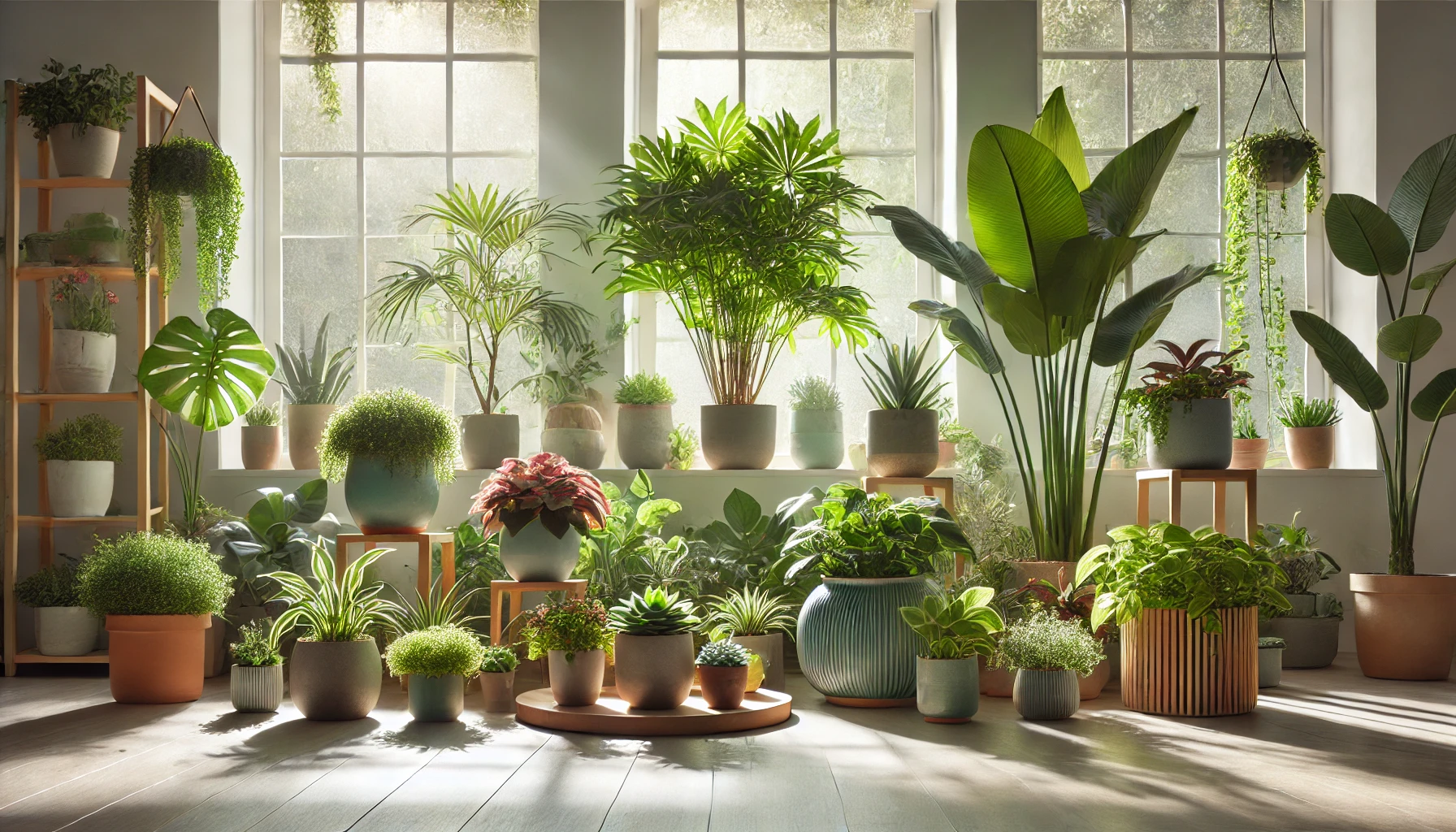Hanging plants are a fantastic way to add greenery to your home without taking up floor or shelf space. They create a dynamic, layered look and can transform a room into a lush haven. In this guide, we’ll explore how to choose the best hanging plants and provide tips on how to care for them.
Benefits of Hanging Plants
- Space-Saving: Perfect for small spaces, as they utilize vertical areas.
- Aesthetic Appeal: Add depth and visual interest to any room.
- Air Circulation: Elevated placement allows for better airflow around the plant.
Best Hanging Plants for Your Home
1. Pothos (Epipremnum aureum)
- Why It’s Great: Easy to care for with beautiful trailing vines.
- Care Tips: Thrives in low to bright indirect light. Water when the top inch of soil is dry.
2. Spider Plant (Chlorophytum comosum)
- Why It’s Great: Hardy and produces baby “spiderettes” that dangle from the plant.
- Care Tips: Prefers bright, indirect light. Allow soil to dry slightly between waterings.
3. String of Pearls (Senecio rowleyanus)
- Why It’s Great: Unique, bead-like foliage adds a quirky charm.
- Care Tips: Needs bright, indirect light. Water sparingly and use well-draining soil.
4. Boston Fern (Nephrolepis exaltata)
- Why It’s Great: Lush fronds bring a classic, tropical vibe.
- Care Tips: Loves high humidity and indirect light. Keep soil consistently moist.
5. Hoya (Hoya carnosa)
- Why It’s Great: Known for its waxy leaves and fragrant flowers.
- Care Tips: Requires bright, indirect light. Water only when soil is dry.
6. English Ivy (Hedera helix)
- Why It’s Great: Fast-growing and versatile, perfect for cascading decor.
- Care Tips: Prefers bright, indirect light. Keep soil evenly moist.
7. Dischidia (Million Hearts Plant)
- Why It’s Great: Delicate, heart-shaped leaves make it a charming addition.
- Care Tips: Thrives in bright light and high humidity. Water moderately.
Choosing the Right Hanging Planter
- Material:
- Ceramic: Stylish but heavy; best for secure hooks.
- Plastic: Lightweight and easy to handle.
- Macramé: Adds a bohemian touch to your decor.
- Size:
- Choose a planter slightly larger than the plant’s root ball to allow room for growth.
- Drainage:
- Opt for planters with drainage holes or use a liner to prevent waterlogging.
Caring for Hanging Plants
1. Watering
- Water thoroughly until it drains from the bottom, but avoid overwatering.
- Use a step stool or bring the planter down for easier watering.
2. Light Requirements
- Rotate plants regularly to ensure even light exposure.
- Place plants according to their light needs, whether bright indirect light or low-light conditions.
3. Humidity
- Mist plants like ferns to boost humidity.
- Use a humidifier in dry environments to keep tropical plants healthy.
4. Pruning
- Trim dead or yellowing leaves to maintain the plant’s appearance.
- For trailing plants, cut back overgrown vines to encourage bushier growth.
Creative Ideas for Hanging Plants
- Cluster Arrangement: Hang multiple plants at different heights for a dramatic effect.
- Window Display: Use suction-cup hooks to hang plants in front of windows.
- Room Divider: Create a natural partition with a row of hanging plants.
Conclusion: Elevate Your Greenery
Hanging plants are a versatile and beautiful addition to any home. By choosing the right plants and following proper care tips, you can create a stunning display that brings life and vibrancy to your space. Whether you’re a seasoned gardener or a beginner, hanging plants are a great way to elevate your indoor greenery.





